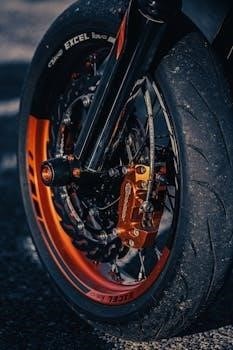
3.6 Pentastar Torque Specs PDF⁚ A Comprehensive Guide
This document provides torque specifications for numerous components and bolts of the 3.6L Pentastar engine, as found in Chrysler, Dodge, Jeep, and Ram vehicles. Specifications include torque values in ft-lbs and Nm.
The 3.6L Pentastar V6 engine is a widely used engine manufactured by Chrysler (now Stellantis) and found in numerous vehicles across its brands. It is considered a sturdy and reliable engine since its debut. It is still used in new vehicles today. The Pentastar engine is known for its exceptional fuel efficiency, low emissions, and smooth operation.
This naturally aspirated V6 engine features a dual overhead camshaft (DOHC) design with 24 valves, contributing to its performance characteristics. Depending on the specific application and model, the engine produces between 283 to 305 horsepower and 251 to 269 lb-ft of torque. The engine is designed for real-world punch and delivers excellent driving dynamics without requiring high-octane fuel. The 3.6L Pentastar engine is designed to achieve 90% of its maximum torque in the range of 1,800 to 6,350 rpm.
In 2016, FCA released an updated version of the 3.6 Pentastar. In 2018, FCA added their mild-hybrid eTorque technology to some Pentastar engines, which uses a belt-driven motor generator instead of a traditional alternator, which makes the engine smoother and more fuel-efficient.
General Specifications of the 3.6L Pentastar V6
The 3.6L Pentastar V6 is a 60-degree V-type engine with a dual overhead camshaft (DOHC) configuration and liquid cooling. The engine has a displacement of 220 cubic inches (3,604 cubic centimeters). It features chain-driven DOHC with 24 valves, roller finger followers, and hydraulic lash adjusters. The engine also incorporates dual independent cam-torque actuated phasers for enhanced performance and efficiency.
The 3.6L Pentastar engine is designed with a returnless, sequential fuel injection system. It has three engine block-mounted oil jets installed to cool the underside of each piston. The oil jets are fed by the main oil gallery and spray upward on the bottom of the pistons and cylinder walls. The engine’s architecture is optimized for smooth operation, fuel efficiency, and reduced emissions. The engine is widely used in Chrysler, Dodge, Jeep, and Ram vehicles, with minor differences in specifications for some models.
Cylinder Head Bolt Torque Specifications and Procedure
The 3.6L Pentastar engine utilizes two different sizes of cylinder head bolts, with a total of 10 bolts installed per cylinder head. The cylinder head bolt torque procedure is critical for proper engine assembly and sealing.
To properly torque the cylinder head bolts, follow this procedure⁚ First, tighten the 8 main bolts located on the sides of the cylinder heads to 22 ft-lbs. Next, increase the torque to 33 ft-lbs. Finally, perform an additional 130-degree turn on each of the 8 main bolts. This ensures proper clamping force and prevents leaks. Always refer to the specific torque specifications for your engine model year, as variations may exist.

Ensure that the cylinder head and block surfaces are clean and free of debris before installing the head. Use new cylinder head bolts, as reusing old bolts can compromise their integrity and lead to improper torque. Follow the specified torque sequence to evenly distribute clamping force across the cylinder head.
Intake Manifold Torque Specifications
Securing the intake manifold properly is crucial for engine performance, preventing vacuum leaks, and ensuring optimal air-fuel mixture. Precise torque specifications are essential during intake manifold installation or reinstallation.
For the upper intake manifold, the torque specification is approximately 7.4 ft-lbs. The lower intake manifold should be torqued to around 8.8 ft-lbs. These values are crucial for a proper seal. Some sources indicate a torque of 71 inch-pounds (approximately 6 ft-lbs or 8 Nm). The 3.6 Pentastar engine intake manifold torque specs varies.
Always consult the specific repair manual for your vehicle’s model year to confirm the exact torque values. Ensure that the mating surfaces are clean and free of debris before installation. Use a calibrated torque wrench to achieve accurate torque. Over-tightening can damage the manifold or the cylinder head, while under-tightening can result in vacuum leaks.

Oil Cooler Torque Specifications
Properly torquing the oil cooler on a 3.6L Pentastar engine is essential to prevent leaks and maintain optimal oil pressure and temperature. Insufficient torque can lead to oil leaks, while excessive torque can damage the cooler or its mounting points. Always consult the manufacturer’s specifications for the correct torque values.
When working on the oil cooler, it’s crucial to follow the recommended torque sequence to ensure even distribution of pressure and a secure seal. The oil cooler typically mounts to the engine block or a specific adapter, and the bolts must be tightened in a specific pattern to avoid warping or cracking. Over-tightening or under-tightening can lead to serious engine damage.
Using a calibrated torque wrench is highly recommended to achieve the precise torque required. Refer to your vehicle’s service manual for the exact torque specifications and sequence for your particular model year. Clean all mating surfaces before installation to ensure a proper seal. Replace any damaged or worn gaskets or O-rings to prevent leaks.

Oil Drain Plug Torque Specification
The oil drain plug torque specification for the 3.6L Pentastar engine is crucial for ensuring a leak-free seal and preventing damage to the oil pan. Over-tightening the drain plug can strip the threads in the oil pan, leading to costly repairs. Under-tightening can result in oil leaks, potentially causing engine damage due to oil starvation.
The recommended torque for the oil drain plug on the 3.6L Pentastar engine is typically around 20 ft-lbs (27 Nm). However, always refer to your vehicle’s service manual for the exact specification, as it may vary slightly depending on the model year and specific engine configuration. Using a torque wrench is essential to achieve the correct torque value.
Before installing the oil drain plug, inspect the plug and the oil pan threads for any damage. Replace the drain plug if the threads are worn or damaged. Always use a new drain plug gasket or seal to ensure a proper seal. Tighten the drain plug to the specified torque value using a torque wrench. Avoid over-tightening, as this can damage the oil pan threads and lead to leaks.
Spark Plug Torque Specification
Proper spark plug torque is crucial for optimal engine performance and longevity in the 3.6L Pentastar engine. Incorrect torque can lead to several issues, including poor combustion, reduced fuel efficiency, and potential engine damage. Over-tightening can damage the spark plug threads in the cylinder head, making future removal difficult or impossible. Under-tightening can result in a poor seal, leading to compression leaks and misfires.
The recommended torque specification for spark plugs in the 3.6L Pentastar engine is typically around 13 ft-lbs (17.5 Nm). However, it is essential to consult your vehicle’s service manual for the precise torque value specific to your model year and engine configuration. Always use a torque wrench to ensure accurate tightening.
Before installing new spark plugs, inspect the threads in the cylinder head and on the spark plugs themselves. Clean any debris from the threads and apply a small amount of anti-seize compound to the spark plug threads to prevent future seizing. Hand-tighten the spark plugs until they are snug, then use a torque wrench to tighten them to the specified torque value. Avoid over-tightening, as this can damage the cylinder head threads and the spark plugs.
Camshaft Phaser Torque Specification
The camshaft phasers, also known as variable valve timing (VVT) actuators, are critical components in the 3.6L Pentastar engine, responsible for adjusting the timing of the intake and exhaust valves. Precise torque specifications are vital when working with these components to ensure proper function and prevent damage. Incorrect torque can lead to issues with valve timing, resulting in reduced engine performance, poor fuel economy, and potential engine damage.
According to available data, the camshaft phasers are torqued to 118 ft-lbs. However, always refer to the specific service manual for your vehicle’s model year and engine configuration, as torque specifications can vary. It’s essential to use a calibrated torque wrench for accurate tightening.
When installing or re-installing camshaft phasers, ensure the mating surfaces are clean and free of debris. Apply a light coat of engine oil to the threads of the bolts before tightening. Follow the specified torque sequence, if any, to ensure even pressure distribution. Over-tightening can damage the phaser or the cylinder head, while under-tightening can lead to leaks or loosening of the phaser.
eTorque Mild-Hybrid System and its Impact
The eTorque mild-hybrid system, introduced by FCA (now Stellantis), enhances the 3.6L Pentastar engine’s performance and efficiency. This system replaces the traditional alternator with a belt-driven motor generator unit, providing functions like regenerative braking, electric power assist, and auto stop-start. While the core torque specifications of the 3.6L Pentastar engine remain largely unchanged with the addition of eTorque, the system introduces new components and related torque specifications that technicians must be aware of.
The eTorque system’s motor generator provides supplemental torque to the engine, improving responsiveness and reducing fuel consumption, especially during start-up and low-speed driving. This system does not fundamentally alter the engine’s internal components, the torque specs for items like cylinder heads, intake manifolds, and oil systems would remain consistent with non-eTorque versions. However, components specific to the eTorque system, such as the motor generator mounting bolts and related electrical connections, have their own unique torque requirements.

Consult service documentation for eTorque-specific torque specs.



